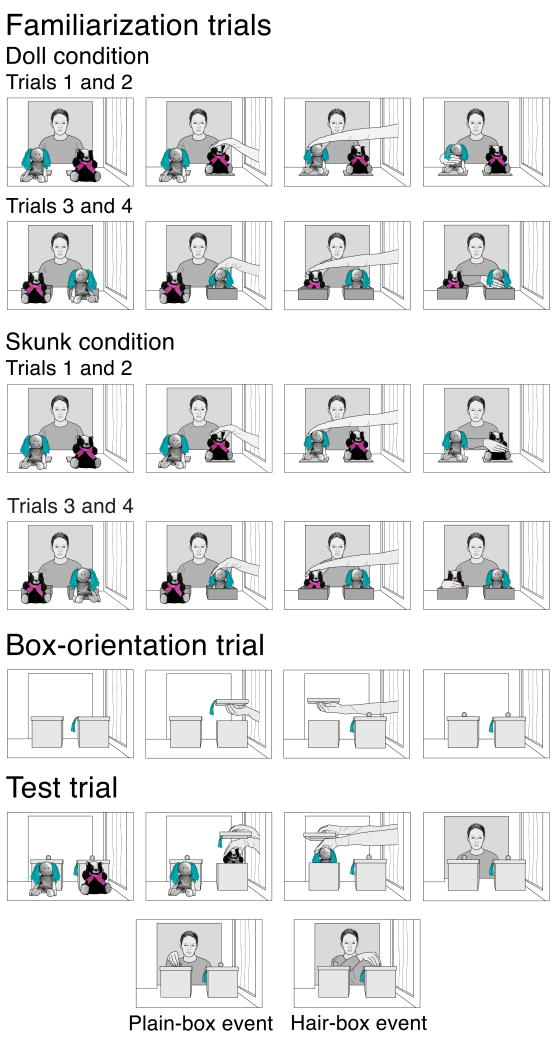Figure 2.
Can 14.5-month-olds attribute to an agent a false perception of an object? In the doll and skunk conditions of Song and Baillargeon [21], the infants first received four familiarization trials. In each trial, a female agent sat behind a doll with blue pigtails and a stuffed skunk with a pink bow. An experimenter's gloved hands placed the toys on placemats in trials 1 and 2 and inside shallow containers in trials 3 and 4. The agent always reached for either the doll (doll condition) or the skunk (skunk condition), suggesting that she preferred it over the other toy. In the box-orientation trial, the agent was absent; two large boxes with lids rested on the apparatus floor and the experimenter rotated each lid in turn, demonstrating that the right box's lid had a tuft of blue hair (similar to the doll's) attached to it. At the start of the test trial, the agent was again absent; the experimenter hid the doll in the plain box and the skunk in the hair box. The agent then returned, reached for either the plain box (plain-box event) or the hair box (hair-box event), and paused.

